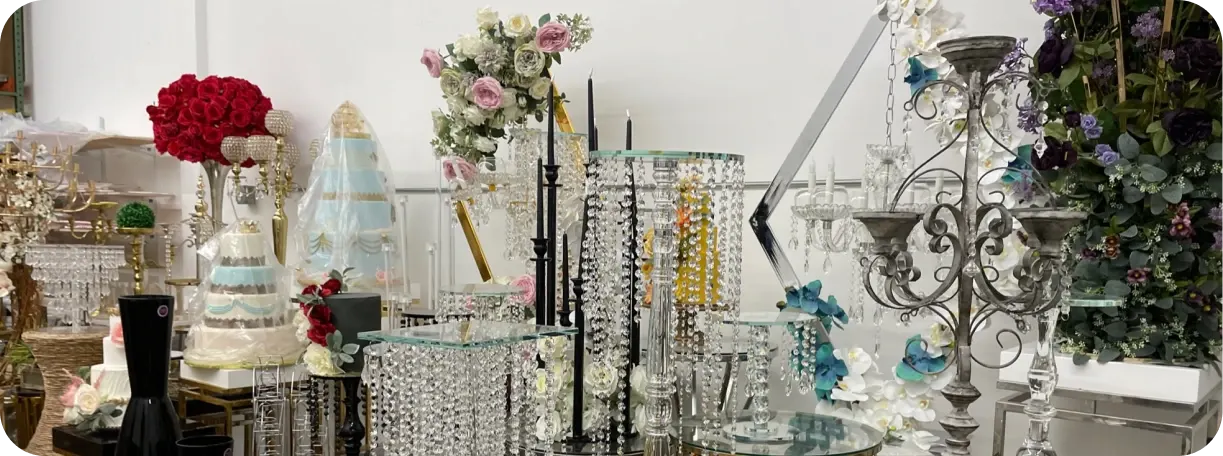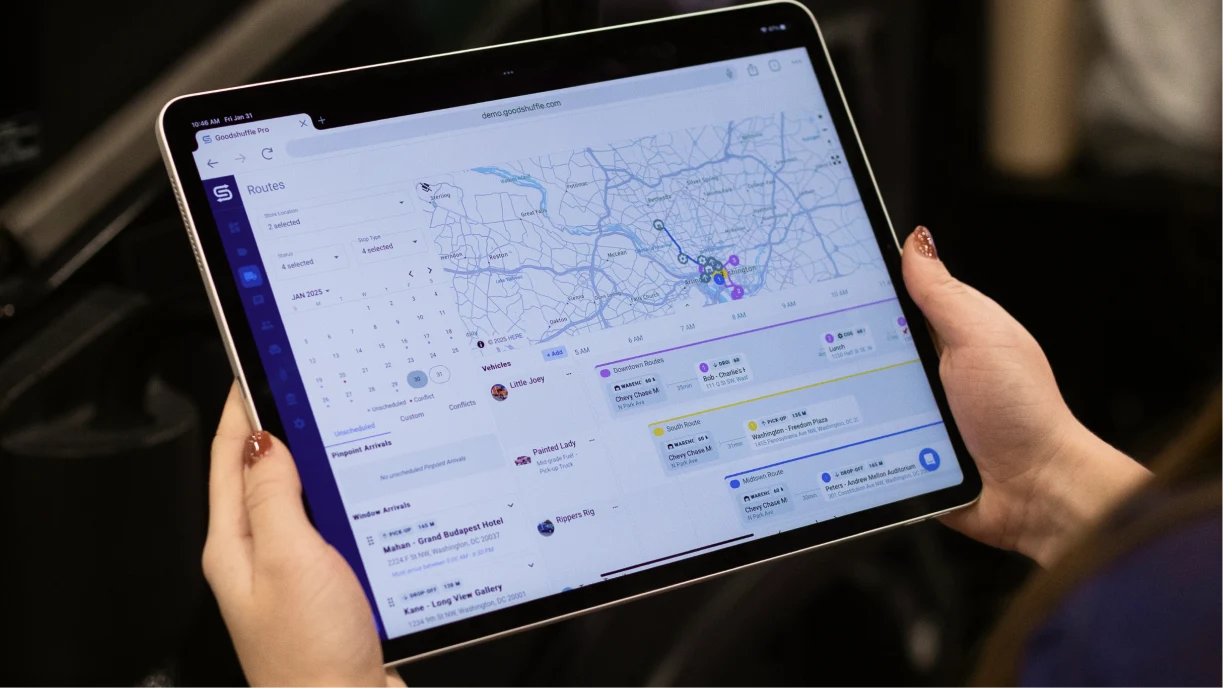So, you’re ready to dive into the world of vintage rentals?
Whether you’re obsessed with mid-century modern furniture or have a soft spot for rustic, antique pieces, starting a vintage rental business can be a fun, creative, and profitable venture.
Here’s a step-by-step guide to help you get started.
How Much Money Do I Need to Start a Rental Business?

It’s the million-dollar question (though thankfully, you won’t need quite that much). Starting costs vary depending on how large you want your initial inventory to be, the quality of the pieces you’re buying, and what region you operate in.
If you’re just renting out one piece, you can get started with as little as $1,000. But for a budget that covers your first batch of inventory, storage, and maybe even a delivery vehicle if you don’t have one, a good starting range is anywhere from $10,000 to $25,000.
Your startup costs won’t stop at inventory alone. You’ll also need to factor in things like:
- Storage space: You’ll need a dry, secure place to store your pieces. Renting a small warehouse or storage unit might be necessary. And don’t forget the rolling carts, furniture pads and blankets, and moving straps you’ll need to carry out events.
- Insurance: Protecting your business from damage or liability is crucial. Event insurance, inventory protection, and business insurance are all essential. Learn more in our complete guide to party rental insurance.
- Marketing: Don’t underestimate the importance of getting your name out there. You can start with word of mouth, but a logo, business cards, and a well-designed website could be worth the investment.
⭐ How to choose a website builder for your business
Research Other Local Event Companies

Check out the competition. Who’s renting vintage items in your area? What are they offering, and how can you stand out? Researching local event companies will give you insight into trends, gaps in the market, and pricing strategies.
Remember, your unique inventory and personal style will set you apart, but it’s crucial to know who else is in the game.
We recommend conducting market research by:
Searching Google for Wedding Rental Businesses Within 75-100 Miles
How many (if any) are there? If there are any, consider ways that you might differentiate your own business from the competition.
Even if you just plan on stocking vintage items for now, searching for wedding rental businesses will give you a broader sense of the market — and what you can grow into. Many of these companies will offer vintage, boho, and other style options to suit their customers’ needs.
The guide below is also a must-read to learn more about niching down, how to handle your first month in business, and where to find other event pros near you.
📔 Read our guide to starting a party rental business
Talking to Local Event and Wedding Planners

The purpose of these meetings should be twofold: 1) to get a sense of the need for this type of business in your market and 2) to understand their frustrations.
Ask the planners about any frustrations that they experience with working with rental companies, so you’ll know what pitfalls to avoid. You can also ask them what kinds of items they typically have trouble sourcing for their clients to get a sense of what items you should look at getting first.
Speaking With Venues in the Area
Besides using this opportunity to get a grasp on local demand, you can also use it to get a sense of what kinds of things you might run into when working with venues as a vintage rental business. Plus, it’s a good chance to get your foot in the door and eventually become a preferred vendor of a venue.
Some types of venues to look into are:
- Hotels & event centers
- Golf courses & country clubs
- Museums that host events
- Ranches and farms that host events
- Independent & private venues
To make this process easy, try to Google “event venue [your city]”.
Purchase Your Starter Inventory

Starting a rental company that specializes in vintage items is so much different from starting any other type of rental business, because you can’t simply find a manufacturer and order bulk quantities of items. It not only takes money, but also time to build an inventory of items that you can rent out for weddings and events.
But it’s also the fun part. Start small and build up as your business grows. Your first pieces should be versatile and popular — think vintage chairs, tables, and décor that work for a variety of events, from weddings to corporate gatherings. Make sure your items are sturdy and in good condition, as repairs can quickly add to your costs.
Some types of items you may want to start with are:
- Vintage china, glassware, and cake stands
- Chalkboards and unique signage options, such as windows and mirrors
- Unique arches & backdrops
- Brass candle holders for taper candles
- Vintage suitcases and luggage
- Unique statement pieces, such as bird cages or a vintage bicycle
- Bud vases and medicine bottles for floral arrangements
Once your business grows a little, you may consider getting larger items so that you can do vintage-styled lounge setups:
- Vintage sofas
- Chairs
- Settees & loveseats
- Coffee and side tables
- Rugs
How to Source Vintage Items

Finding the right pieces can be a treasure hunt. Some top places to search include:
- Flea markets: One-of-a-kind finds are often hiding at these weekend events.
- Vintage and antique shops: While these can sometimes be pricey, there are some winners if you look closely enough.
- Estate sales: These can be a goldmine for vintage items at reasonable prices. Keep an eye out as you’re driving around town or in your local newspaper.
- Online marketplaces: Sites like eBay, Craigslist, or Facebook Marketplace often have hidden gems.
- Auctions: Larger items or bulk buys can sometimes be won at auction for great prices.
Properly Store Your Inventory

When you’re starting an event business that is heavy on inventory, the biggest issue you’ll run into is storage. Many people start their businesses out of their garage (nothing wrong with that), but then quickly find that their inventory has taken over their home, and they can’t find anything.
Also, vintage items are delicate and often require specific storage conditions. A temperature-controlled environment will prevent items from warping, cracking, or deteriorating over time.
Decide early on how much you want to grow to begin with, and make a plan to scale your business. Maybe you decide that once you reach $2,500 in sales, you’ll look for an alternative meeting and storage space where you can do mock setups, meet with clients, and install industrial-grade shelving.
💡 Learn how to purchase, manage, & track inventory
Get Organized to Accept Business

Before you launch, ensure that your business operations are ready. You’ll need:
- A user-friendly website: Include photos of your items, pricing, and an easy way for clients to contact you.
- A way to accept payment: How will you get paid securely? Are you cash-only? Do you accept checks, credit cards, or online payments?
- Contracts: Protect yourself and your items by negotiating solid rental agreements that outline responsibilities, delivery terms, and damage policies.
- Rental software: Use a tool like Goodshuffle Pro to manage your inventory, client bookings, payments, contracts, and more.
Get Started With Your Vintage Rental Company
Starting a vintage rental business is a creative and rewarding way to bring unique pieces to special events like weddings, parties, and events. Though each vintage business has something in common, each is also unique due to the one-of-a-kind vintage items they carry. With the right prep and some savvy decisions, you’ll be on your way to building a stylish and successful venture!








